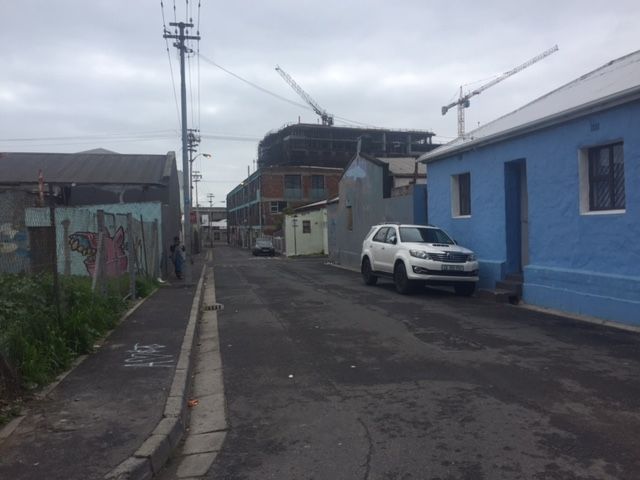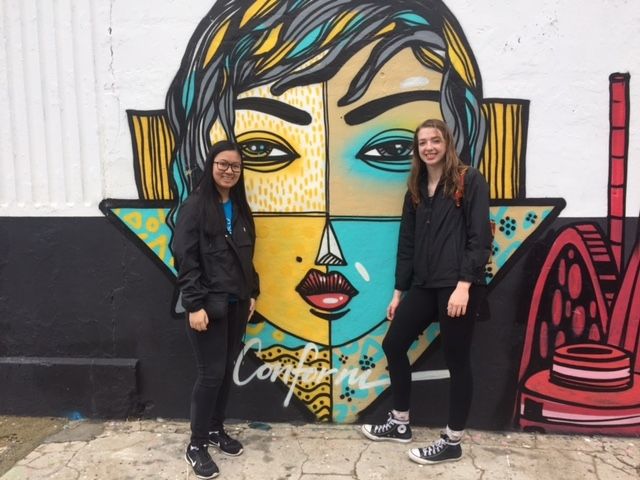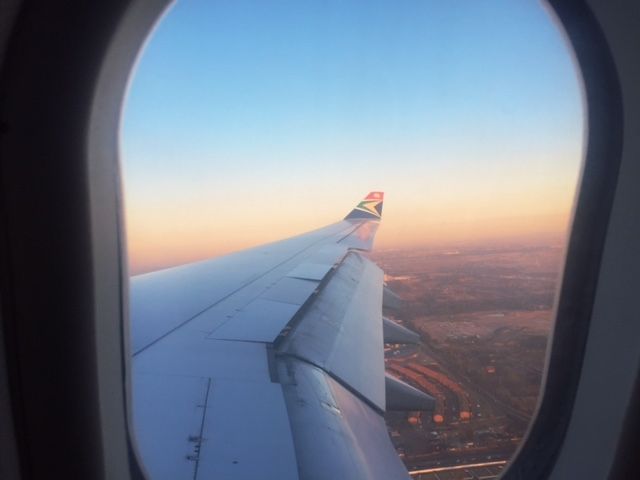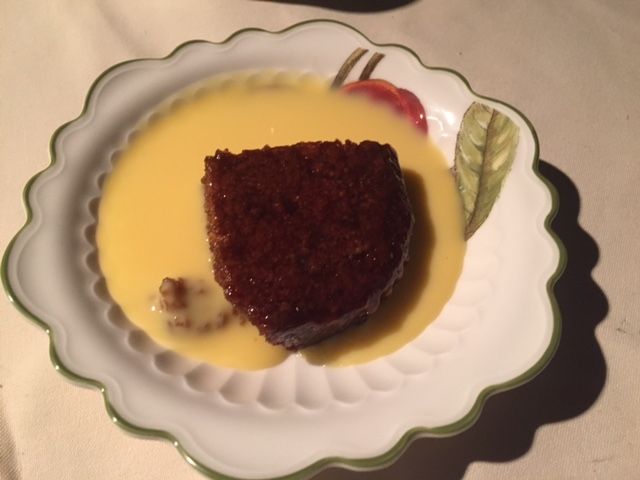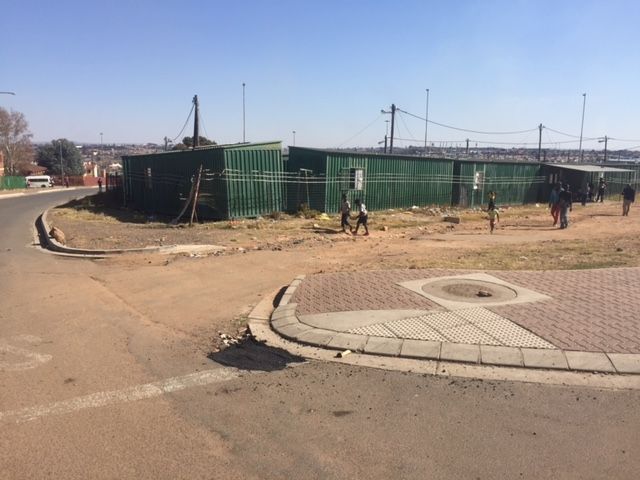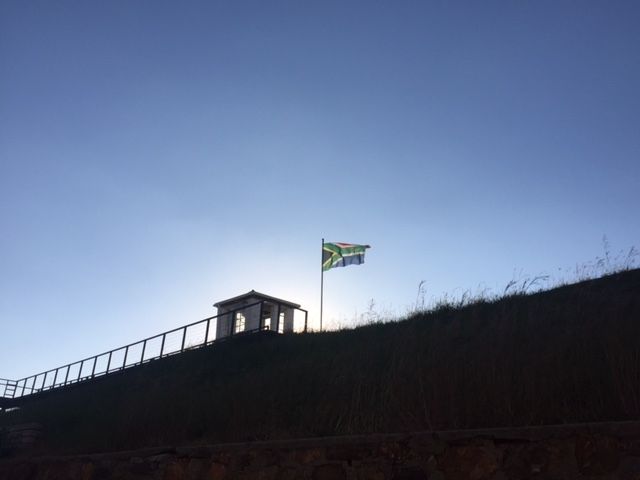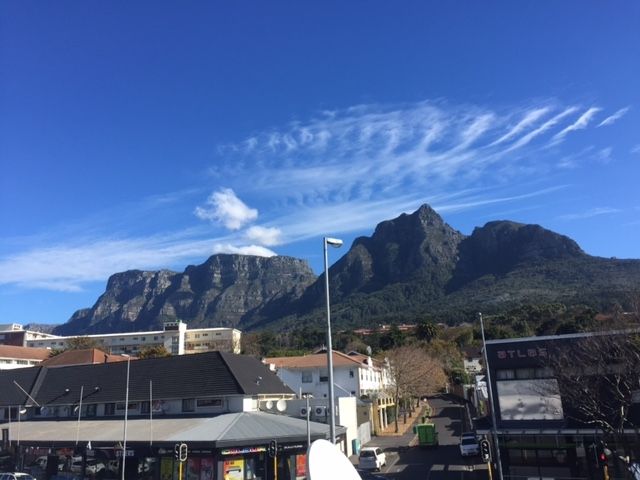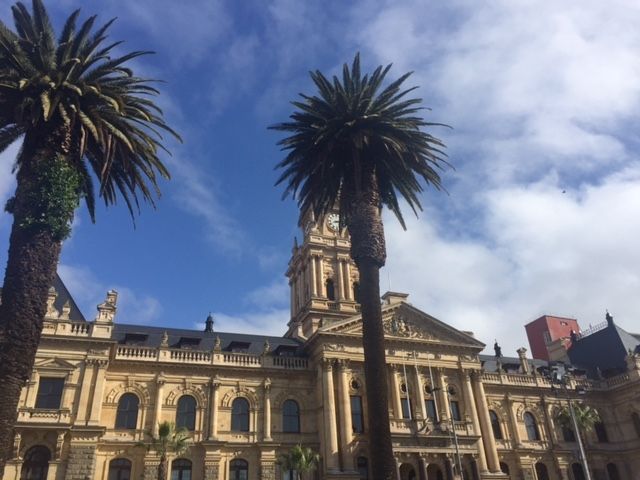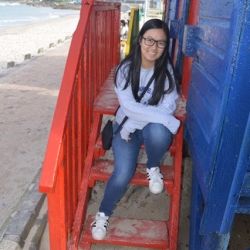From Jo'burg to CPT: First Week
Living in South Africa for nearly a week has been a surreal and rewarding experience. The rather taxing 17 hour flight with a stopover in Senegal has proven to be worth it so far! Our first steps on the African continent were met with the early winter sunset and a chilling breeze, foreign to our summer-adjusted senses. When we entered the O.R. Tambo Airport in Johannesburg, usually the first point of entry into SA, our local program leaders awaited us, greeting us with welcomes all around. All of us were relieved to have made it to the other side of the ocean, but were quite exhausted. We boarded a bus to our quaint bed and breakfast called The Wedgwood in Melville, a suburban neighborhood of Johannesburg. We were paired up to a roommate and treated to spacious rooms and complimentary biscuits as well as rooibos tea which set up nicely for a good night’s sleep. Fortunately, no jet lag for me!
Johannesburg
Johannesburg Highlights
- Orientation + first journaling session
- Tours of Apartheid Museum and Constitution Hill (SA's Supreme Court equivalent)
- Tour of Soweto (South Western Township); Mandela House and Hector Pieterson Memorial
- First impact project with Kliptown Youth Program
With the comforts of private transportation, our first few days consisted of orientation, tours and excursions in and around Johannesburg. While not as scenic as our primary destination, Jo’burg has a deep, rich history to provide, rooted in the disgustingly “recent” events of apartheid (if you think about it, people who lived through apartheid still live to tell their experiences today). Acclimating to the culture and new surroundings, it took a few days for it to sink in that I was actually in Africa; many of my fellow peers had agreed that it really did not feel like “Africa” at first. What could have caused this is the similarities we saw between SA and home. It could have also been caused by the perception of Africa many Americans popularize in media - that it is a continent full of desert, disease, animals and poverty.
Cultural Observations
Upon arrival in Jo’burg, I was able to draw many surprising parallels between SA and the US. Driving on the highway allowed us to contextualize by scanning the surrounding area. My first observation was that it felt similar to America in terms of infrastructure and urban development. Although they drive on the left side of the road, I felt like we were driving on the freeway back at home. Prior to this trip, people had told me to “get all my shots” and “watch out for lions”. Contrary to popular belief, South Africa is beyond the rest of its continent in terms of development. Not quite there yet, but it certainly exceeded expectations. South Africa, in fact, has 3 different capitals - Cape Town is the legislative capital, Pretoria is administrative, and Bloemfontein is the judicial, but their constitutional court is in Johannesburg.
Next, I had become aware of the “South African hospitality” our program leaders had been telling us to look out for in our encounters. Our first encounter with SA hospitality had been at breakfast, where the cooks kindly greeted us every morning and offered to make omelets (the best I’ve had) and tea. Many others had welcomed our group into their homes, something we’d never get to experience otherwise as merely tourists. From our experiences so far, we’ve collectively established that many South Africans are more friendly and welcoming than the people we come across back home.
I also noticed how the country, from Gauteng province to Western Cape, invests so much respect and admiration for a singular figure - Nelson Mandela. Streets are named after him, his face proudly adorns the sides of skyscrapers, and his image is displayed on all paperback currency (rands).
Greatest of all, I couldn’t help but admire the optimism some South Africans had, especially the most disadvantaged. Despite hardships and unimaginable living conditions within the townships (e.g. Soweto), mothers remained resilient and children are optimistic, both appreciative of the humble shacks that house them. In opportunistic Soweto, the mantra is that opportunities are found on every corner, and that it is where “dreams are born” and “dreams are made”. Their hopefulness in the face of adversity is definitely a quality to be commended.
From the time we formed a friendly circle at Washington Dulles Airport, I felt that the group clicked right away. The group consists of 14 students including myself, coming from seven different states around the US. This smaller group size, compared to larger CIEE programs, is an advantage in the sense that it’s not overwhelming. I’ve had the opportunity to interact with every person on the program and learn a few interesting things about each. Now regularly hanging out in our floor’s common room, the group bond was evident from the start in our first journaling session together to our active Snapchat group. In addition to the group activities and meals, the bus rides definitely bring us closer together. All of our program leaders and local teachers have been extremely nice and supportive, as well as determined to challenge us to introspect.
Cape Town
Cape Town Highlights, Week 1
- Orientation, dorm move-in
- Afrikaans language class, SA history lecture
- Cape Town walking tour
- Shopping at the Waterfront and Oranjezicht City Farmers Market
- Meeting/interacting with local young adults at Beth Uriel home for disadvantaged boys
- Woodstock cycling tour
- Community lunch at St. Michael's for the homeless
We boarded a plane to Cape Town early Thursday morning and were instantly met with water conservation signs upon arrival, shown below. Shortly after, we were taught some water conservation measures, such as taking 2-minute showers and reusing water for various purposes. The water crisis is definitely a larger deal in Cape Town, although it’s getting better. After a short scenic drive around glorious Table Mountain, we finally arrived to the CIEE Cape Town Global Institute in Rondebosch, home to the University of Cape Town! Before orientation, we were assigned new roommates and moved into our dormitories within our flats. Our flat’s balcony has a fabulous view of Table Mountain and the streets of Rondebosch below. The city itself draws on a lot of European influence due to settlement by the Dutch and British.
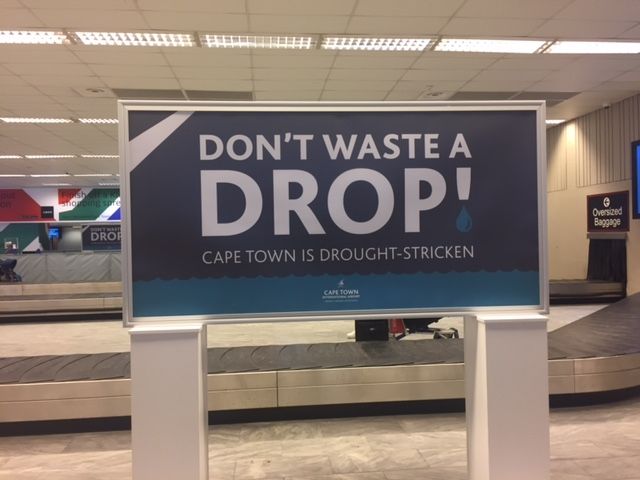
Segregation in Cape Town
The biggest thing I found surprising in Cape Town is the fact that the city is still very much racially segregated. We were shown a demographic map of the city, where it was obvious that there were white, coloured and black neighborhoods partitioned by roads. We even closed out the lecture with a video that showed the unspoken divisions between different social classes, a “post-apartheid apartheid”. South Africa actually has the highest gini index, which essentially measures the extent of economic disparity within the country - this means that SA has the most disparity in the world. You can watch the video here.
Language
Almost everyone I’ve encountered here speaks English, at least as a second language, so I’ve used English in all my interactions. South Africa has 11 official languages, including Afrikaans, Zulu, English and Xhosa. The fact that many South Africans are bilingual struck me as surprising. In one instance, I had the chance to speak with a teenage boy at Beth Uriel, and his command of the English language was quite impressive. Because Afrikaans is similar to Dutch, and therefore my current language of study German, Afrikaans has me the most intrigued, and fortunately that is the language we are studying in our workshops. On the plane to Cape Town, I even kept a newspaper written in Afrikaans! Our first language workshop was on Friday and we learned about its many cultural and political influences, regional spins (i.e. Afrikaaps) and changes/continuities.
As we exit the “honeymoon phase” of our program, our classes and debriefing sessions have been a bit more rigorous and challenging, forcing us to think about the nuances of what it means to participate in service learning, which is practically an economy here in South Africa. Stay tuned as we become more involved with the community through service work in the next week. I can’t wait to share some of the valuable takeaways week two will have to offer!
Related Posts
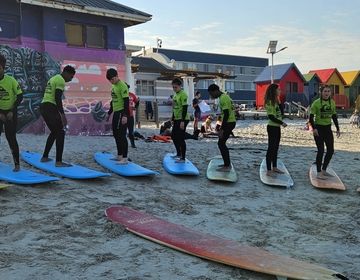
Hang 10!
This past weekend students explored local markets, travelled to Boulders Beach to see the penguins and saw the western-most cape which Cape Town was named after! Students also learned how... keep reading
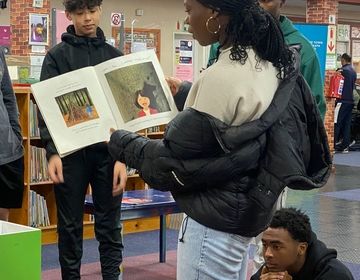
First Impressions of Service-Learning PT 2
Once students settled into their service-learning site and had more time with the students, they were able to read a group of younger students' stories and get them interested in... keep reading
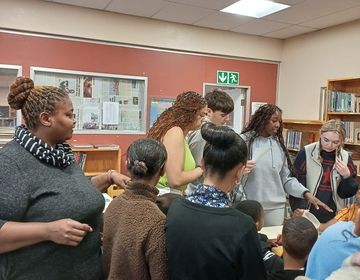
First Impressions of Service Learning
This week, after learning about the history and cultural context of their service-learning site, students began their service! Students were educated on literacy in the area and were told that... keep reading
